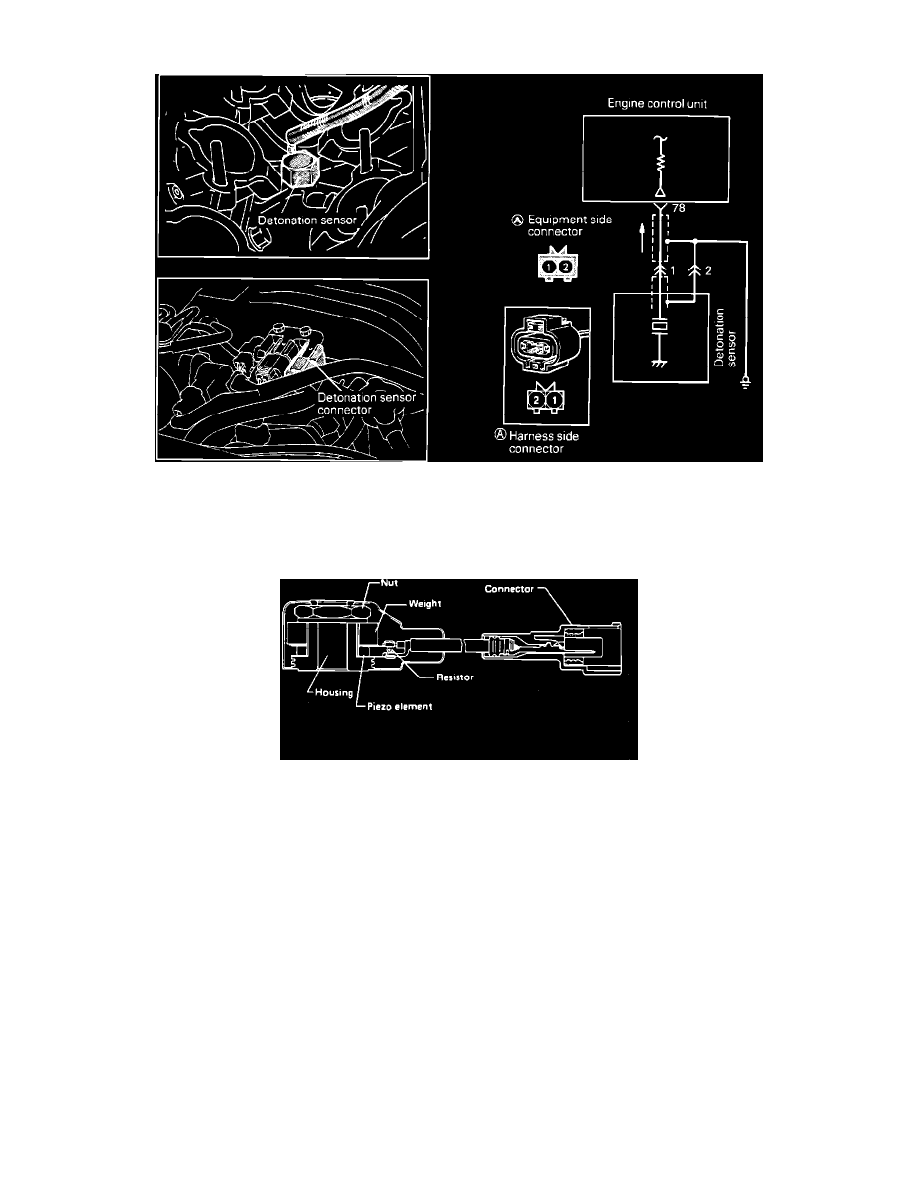Stealth R/T Turbo V6-2972cc 3.0L DOHC Turbo (1996)

Knock Sensor: Description and Operation
Detonation "Knock" Sensor Circuit
PURPOSE
The Knock Sensor converts knocking vibrations into electric signals. The signals are used by the Engine Control Module (ECM) to control
ignition timing and turbo boost pressure.
Knock Sensor
CONSTRUCTION
The sensor is a piezo-electric crystal made of three elements: Titanium Oxide, Zirconium Oxide and Lead.
KNOCK CONTROL SYSTEM
KNOCK SENSOR
When engine knocking occurs, the crystal shakes and produces an A/C voltage signal. When engine knocking is detected by the ECM, it retards
the timing (maximum of 12° at the crankshaft) and reduces boost pressure (via the wastegate solenoid) to reduce the incidence. Some reduction in
engine power will be noticed with the reduction in timing and boost.
WASTEGATE SOLENOID
Normally the wastegate solenoid is fully grounded when the key is on, allowing maximum boost by bleeding of wastegate operating pressure.
However if the sensor is shorted (0 Volts) or the circuit is open (5 Volts), the ECM retards the timing and lowers the maximum boost from 12 PSI
to 9 PSI, dependent upon the load and RPM information. When this happens it controls the wastegate solenoid operation to eliminate knocking
three ways:
1. The ECM can disconnect the ground (14 Volts) from the solenoid circuit, causing the solenoid to open and allow manifold pressure to open the
wastegate, thus lowering the boost.
2. The ECM can fully ground the solenoid (0 Volts) until it sees a high load signal (based on input from the Air Flow Sensor). It will then duty
